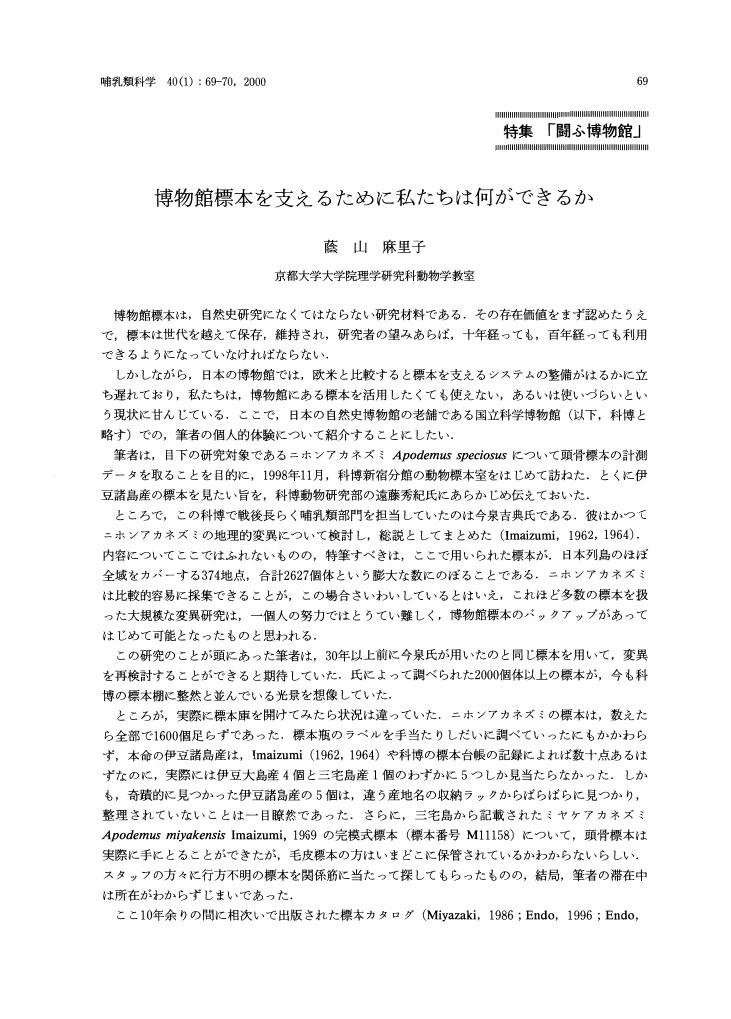- 著者
- 坂田 金正 高田 靖司 植松 康 酒井 英一 立石 隆 長谷川 雅美 蔭山 麻里子 浅川 満彦
- 出版者
- 日本生物地理学会
- 雑誌
- 日本生物地理学会会報 (ISSN:00678716)
- 巻号頁・発行日
- vol.61, pp.135-139, 2006-12-30
To study the biogeography on the Japanese insular helminth fauna of Apodemus speciosus (Muridae, Rodentia), thoses from the Izu Islands in Japan were investigated in the present survey. A total 525 individuals of the large Japanese field mice were collected between March, 1984 and June, 1998. From the field mice collected on five islands in the of Izu Island Chain, including Ohshima Island (abbreviated to o), Nii-jima Island (n), Shikine jima Island (s), Kozu-shima Island (k) and Miyake-jima Island (m), 10 parasitic nematode species, namely, Heligmonoides speciosus [o, n, s, k, m; showing the abbreviations of the localities], Rhabditis strongyloides [o, k], Syphacia frederici [o, n, k, m], Heterakis spumosa [o, n, s, k], Subulura suzuldi [k], Rictularia cristata [s, k, m], Physaloptera sp. [o, k, m], Mastophorus muris [n, k], Eucoleus sp. [k], and Trichunis sp. [s], were detected through the present examination. This is the first report of the parasitic nematodes obtained from A. speciosus in the Izu Islands. The nematodes obtained except for Physalopera sp. have been reported already from A. speciosus occurring on the main islands and several offshore islands of Japan. The distribution pattern of homogenic development nematode genera, Heligmonoides and Heligmosomoides, was "Heligmonoides speciosus present, Helib nosomoides kurilensis absent"-type.
1 0 0 0 OA 博物館標本を支えるために私たちは何ができるか
- 著者
- 蔭山 麻里子
- 出版者
- 日本哺乳類学会
- 雑誌
- 哺乳類科学 (ISSN:0385437X)
- 巻号頁・発行日
- vol.40, no.1, pp.69-70, 2000 (Released:2008-07-30)
